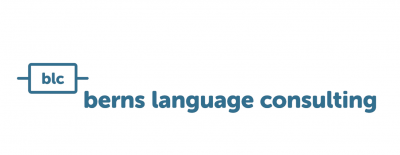For us at blc, language quality assurance and translation simply belong together. Just like a devoted couple does. Why are we such big fans of this ‘couple’ you ask? You find our answer in today’s blog!
Before a book is available in bookstores, it has to be proofread and corrected many times. Why? Because it is printed in one edition and corrections can only be made for the next edition. A multi-loop proofreading and correction process ensures that the linguistic quality of the book is flawless. Thus the risk of financial and image loss are virtually eliminated.
Technical Documentation: A Real ‘Toughy’
In other media or text types the danger of errors and inconsistencies is even more severe. With the wrong technical documentation, for example, there can be real danger to life and limb. And the fact that technical documentation is often translated into many different languages increases the danger zone even more. Because errors no longer occur only in the source, but also in all target languages. But there are measures that can be taken before the translation takes place in order to reduce risk as well as financial effort. All the while ensuring consistent quality.
Language Quality Assurance Right From The Start
In order to get it right from the start, it is advisable to create an editorial guide that contains all relevant writing rules. Ideally with special focus on translation-oriented writing rules, such as compositing, acronym usage or sentence length. Once these writing rules have been defined, they can easily be implemented in an Authoring Assistance System. Such systems guide authors throughout the text creation process with suggestions for correction. An essential feature of Authoring Assistance Systems is the terminology usage check. If corporate terminology is maintained thoroughly and consists of preferred and prohibited terms, the consistency of a text can be significantly increased by these checks. Thus reducing queries by translators significantly.
Proofreading with regard to the translation
Editorial guidelines and Authoring Assistance Systems cannot completely prevent errors from creeping in or sometimes there are no systems available. Then it makes sense to introduce a manual process step before translation. In this step, the source text is checked manually for predefined rules, terminological consistency, spelling and grammar errors. This ensures that errors are not incorporated into the translation. Thus there are next to no translation errors and no subsequent corrections are necessary. This serves to minimize queries from translators. It also assures that your translation memory is populated with high-quality segments, so that your next translation is perfect as well. This process step can also be performed by external service providers.
Uh-Uh – But That’s Expensive!
Of course, the cost of implementation is high in the beginning. Nevertheless the business case is sound because over time cost and effort are minimized in three main areas:
- In text creation, authors can create texts faster using writing rules or with the support of an Authoring Assistance System and have fewer queries.
- Terminology benefits and grows because the language quality assurance process makes it easier to identify relevant term candidates.
- And last but not least, translation is less prone to errors and the match rate in the translation memory is higher.
After reading all this, you might be wondering how you can put the finishing touches to your source texts, reduce translation cost and optimize your multilingual content process!
Let us help you! How? By analyzing and defining your optimal process and support you with the right tools. Just give us a call!
Picture: Glen Carrie on Unsplash






